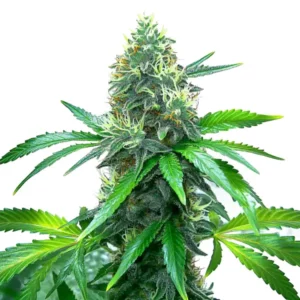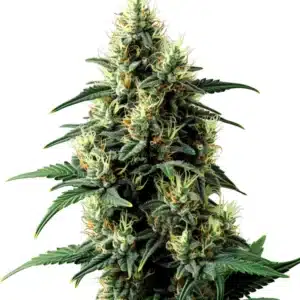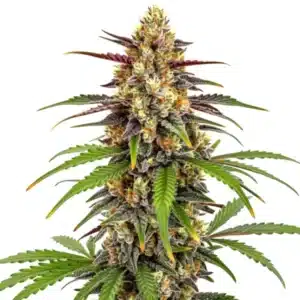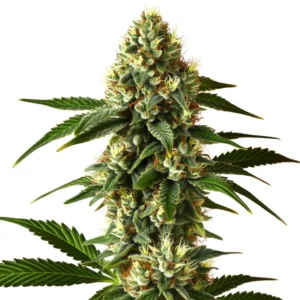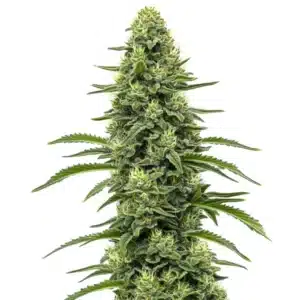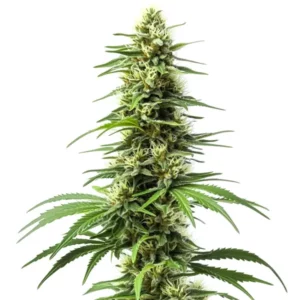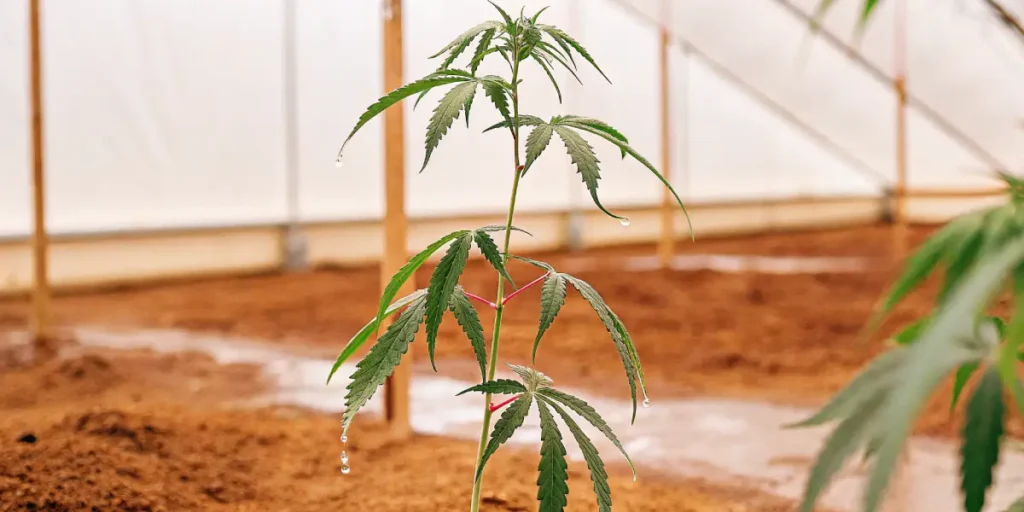
How Overwatering Affects Cannabis Transpiration
Overwatering is a common pitfall among cannabis growers, both new and seasoned. Many think they’re doing their plants a favor, but too much water can actually harm the process of transpiration. How overwatering affects cannabis transpiration is by disrupting the plant’s ability to release water vapor through tiny openings in the leaves called stomata. When this natural process is interrupted, it can lead to oxygen deficiency in the roots, slower growth, and various unwanted outcomes.
Transpiration is essential for transporting nutrients from the soil to the rest of the plant. When water is excessive, roots can suffocate, making nutrient uptake difficult. This not only affects growth but also the plant’s ability to manage moisture efficiently. Imagine trying to breathe in a room filled with smoke; that’s how your plant feels when it’s drowning in water.
Recommended Strains
Stomatal function is critical for transpiration. These tiny openings regulate water vapor release and gas exchange. Overwatering can cause them to close, disrupting the entire system. Strains like Blue Dream, available at Blimburn Seeds, require careful watering to ensure optimal stomatal activity.
Impact of Overwatering on Cannabis Plant Transpiration
How overwatering affects cannabis transpiration is a crucial concept every grower should understand. Overwatering is a common pitfall among cannabis growers, both new and seasoned. Many think they’re doing their plants a favor, but too much water can actually harm the process of transpiration. It disrupts the plant’s ability to release water vapor through tiny openings in the leaves called stomata. When this natural process is interrupted, it can lead to oxygen deficiency in the roots, slower growth, and various unwanted outcomes.
Excessive water also means there’s more moisture in the soil than the plant needs. This imbalance can cause wilting, yellowing leaves, and stunted growth. For instance, if you’re growing strains like GG4 from Blimburn Seeds, pay attention to soil moisture levels to avoid these issues.
Addressing the impact of overwatering on cannabis plant transpiration involves more than just adjusting watering schedules. It requires knowing the specific water needs of each strain and tailoring your practices accordingly. Monitoring environmental factors like humidity and temperature can also provide insights into how much water your plants actually need.
Over time, growers who pay attention to the nuances of cannabis transpiration patterns notice improvements in plant health and yield. This attention to detail helps prevent the negative consequences of too much water and promotes a more harmonious growth environment. Investing in tools like humidity gauges can be beneficial to keep conditions optimal for transpiration.
Effects of Excessive Watering on Marijuana Leaf Moisture Loss
How overwatering affects cannabis transpiration is often misunderstood. Too much water can lead to a decrease in leaf moisture loss, which sounds beneficial but isn’t. Normally, leaves release water vapor to cool the plant and draw nutrients up from the roots. When overwatered, this process is hindered, resulting in weak plants and poor nutrient uptake.
This disruption also affects how the plant handles heat. With less moisture loss, the plant can overheat more easily. Imagine wearing a winter coat in summer; that’s how a plant feels when it can’t release enough water vapor.
One of the overlooked effects of excessive watering on marijuana leaf moisture loss is its impact on the plant’s overall energy balance. When leaves cannot shed moisture efficiently, they retain more heat, which can lead to thermal stress. This stress forces the plant to use more energy to maintain its internal temperature, diverting resources away from growth and development.
Moreover, excessive water in the system can dilute essential nutrients, leading to deficiencies that further compromise leaf health. Balanced watering practices that allow for proper moisture loss not only support healthy leaves but also ensure that the entire plant can function optimally. Paying attention to the specific needs of different strains, like OG Kush from Blimburn Seeds, can help mitigate these issues.
Promos & Deals
How Overwatering Cannabis Disrupts Stomatal Function
Stomata play a crucial role in regulating water vapor release and gas exchange. When you overwater, you force these tiny pores to close. This closure prevents the plant from releasing excess water, trapping unnecessary moisture inside.
Closed stomata also mean the plant can’t take in carbon dioxide, essential for photosynthesis. This disruption can lead to poor growth and lower yields. It’s like trying to run a marathon while holding your breath. Your plants need open stomata to thrive.
The way overwatering cannabis disrupts stomatal function has a cascading effect on the plant’s overall health. How overwatering affects cannabis transpiration becomes evident when stomata close, preventing the plant from releasing excess moisture and regulating temperature. With stomata closed, not only is photosynthesis impaired, but the plant also becomes more susceptible to pathogens that thrive in moist conditions. This vulnerability can lead to increased disease incidence, further stressing the plant.
Additionally, the inability to release water vapor efficiently affects the plant’s cooling mechanism. As a result, internal temperatures can rise, exacerbating stress and potentially leading to heat damage. Ensuring that watering practices promote open stomata can significantly improve plant resilience and health, especially for sensitive strains like Blue Dream.

Consequences of Too Much Water on Weed Plant Transpiration
When weed plants receive excessive water, they become less efficient at transpiration. This inefficiency can lead to nutrient deficiencies. Without proper transpiration, nutrients can’t move from the soil to the plant.
Overwatering can also encourage pests and molds, which thrive in moisture-rich environments. These can further stress the plant, making it even harder to recover. Think of it as having unwanted guests who refuse to leave.
The consequences of too much water on weed plant transpiration extend beyond immediate growth issues. Over time, chronic overwatering can weaken the plant’s structural integrity, making it more prone to breakage and less able to support its own weight. This structural weakness can be particularly problematic during the flowering stage when plants are most vulnerable.
Furthermore, consistent overwatering can alter the soil’s pH, leading to an environment that is less conducive to healthy root development. How overwatering affects cannabis transpiration is also critical to understand, as excess water limits oxygen availability in the root zone, reducing the plant’s ability to release moisture through its leaves. By knowing the relationship between watering practices and plant health, growers can create a more stable and productive growing environment. Implementing measures like soil amendments can help maintain the balance needed for successful growth.
Relationship Between Overwatering and Cannabis Water Vapor Release
The relationship between overwatering and water vapor release is inversely proportional. More water means less vapor release, which is problematic. Plants need to release water vapor to cool themselves and facilitate nutrient uptake.
When plants can’t release enough water vapor, they become more susceptible to diseases. This is especially true for dense strains like Gorilla Glue 4, which can trap moisture more easily. Ensuring proper airflow and watering can help in maintaining healthy vapor release.
Knowing the relationship between overwatering and cannabis water vapor release is crucial for optimizing plant health. Insufficient vapor release not only affects cooling but also impacts the plant’s ability to communicate with its environment. This lack of communication can stunt growth and lead to suboptimal nutrient absorption.
Effective management of water vapor release involves maintaining the right balance of humidity and airflow. These factors ensure that plants can release excess moisture efficiently. By creating a well-rounded environment, growers can prevent many of the negative impacts associated with overwatering and enhance the overall vitality of their crops.
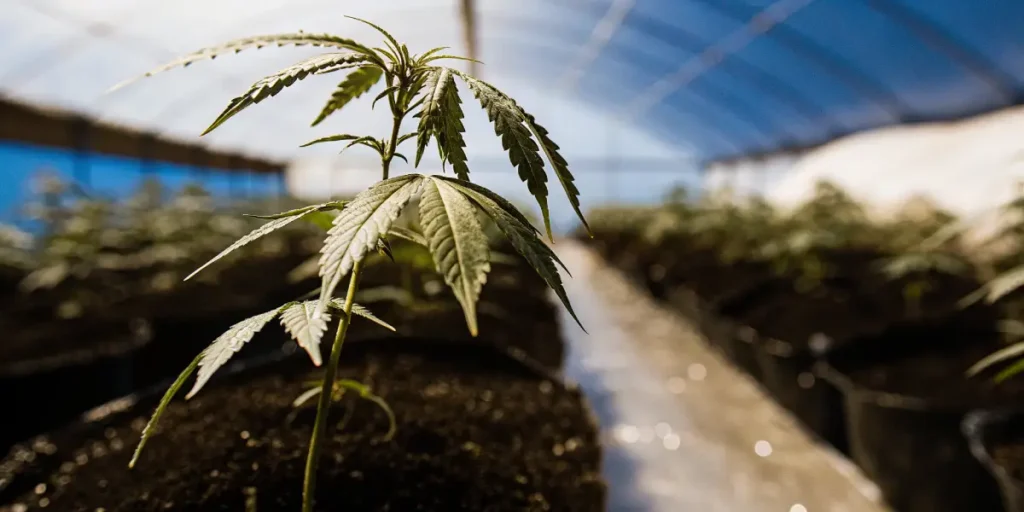
FAQs about How overwatering affects cannabis transpiration
How can I tell if my cannabis plant is overwatered?
Overwatered cannabis plants often show signs of wilting, despite the soil being wet. Leaves may appear yellow or droopy, and the plant might look generally unhealthy. Checking the soil moisture and ensuring it dries out between waterings can help prevent this issue.
Using a moisture meter can be particularly useful. These devices measure the water content in the soil, helping you decide when it’s the right time to water again. Always aim for a balance, especially with sensitive strains like OG Kush from Blimburn Seeds.
Observing changes in leaf texture and color can also be indicative of overwatering. Leaves that feel soft or appear overly glossy may suggest that the plant is retaining too much water. By knowing these visual cues, growers can make more informed decisions about adjusting their watering practices.
Consistent monitoring and record-keeping can further enhance your ability to identify overwatering early. Keeping track of watering schedules and environmental conditions allows you to correlate specific symptoms with watering habits, leading to more effective intervention strategies.
What are the best practices to avoid overwatering?
One effective strategy is to water deeply but less frequently. This encourages roots to grow deeper, seeking moisture, and helps prevent waterlogged soil. Always ensure pots have proper drainage to allow excess water to escape.
Monitoring the weight of your pots can also be an indicator. Lighter pots often mean it’s time to water, while heavy pots suggest waiting a bit longer. Pairing this with strain-specific guidelines, like those for Blue Dream, can ensure optimal growth.
Employing techniques like mulching can also help maintain proper soil moisture levels. Mulch acts as a barrier, reducing evaporation and keeping the soil consistently hydrated without oversaturation. This practice is particularly useful in outdoor growing environments where conditions can be unpredictable.
Another approach is to use moisture-retentive materials like coco coir, which can help maintain an even moisture distribution. This not only reduces the risk of overwatering but also promotes a healthier root environment by improving aeration and nutrient availability.
What soil type is best for preventing overwatering?
Well-draining soil is crucial in preventing overwatering. Look for soil mixes that contain perlite or vermiculite, which improve aeration and drainage. These materials help excess water pass through, reducing the risk of waterlogged roots.
Many growers prefer a soil mix specifically designed for cannabis, which you can find at various retailers. This ensures the right balance of nutrients and drainage, keeping strains like Gorilla Glue healthy.
Incorporating organic matter such as compost or peat moss can also enhance soil structure. These materials increase the soil’s capacity to retain essential nutrients while allowing excess water to drain properly. This balanced approach supports robust root development and overall plant health.
Experimenting with different soil blends can provide insights into what works best for your specific growing conditions. By adjusting the soil composition based on the unique needs of your cannabis strains, you can optimize growth and prevent the adverse effects of overwatering.
How does overwatering affect cannabis yield?
Overwatering can significantly reduce cannabis yield. When roots are waterlogged, nutrient uptake is compromised, leading to stunted growth and smaller buds. Healthy transpiration is essential for maximizing yield.
To ensure a bountiful harvest, regularly check soil moisture and adjust watering schedules based on the plant’s growth stage. This attention to detail is especially important with high-demand strains like OG Kush, ensuring they reach their full potential.
Beyond immediate growth concerns, overwatering can also impact the quality of the final product. Excess moisture can dilute the concentration of terpenes and cannabinoids, reducing the potency and flavor profile of the buds. This compromise can affect the market value and consumer satisfaction.
Implementing a comprehensive watering strategy that considers all growth stages can mitigate these risks. By maintaining optimal moisture levels throughout the plant’s life cycle, growers can not only improve yield but also enhance the overall quality of their harvest.
Are there any signs of recovery from overwatering?
Once you stop overwatering, you may notice new growth and a perkier appearance in your plants. Leaves should regain their color and the plant will look more vigorous. This indicates that the roots are recovering and transpiration is back on track.
It’s a gradual process, so patience is key. Continue monitoring watering practices and make adjustments as needed. Using tools like moisture meters can help prevent future issues and keep strains like Blue Dream thriving.
Besides to visual improvements, the soil may begin to smell fresh and earthy again as it dries out, indicating that the root environment is returning to a healthy state. This olfactory sign can be reassuring, confirming that your adjustments are effective.
Documenting recovery patterns can be valuable for future reference. By noting how long it takes for signs of recovery to appear and what changes were most effective, growers can refine their techniques and prevent overwatering in subsequent growth cycles.



